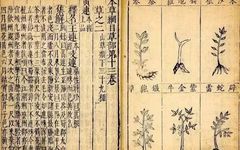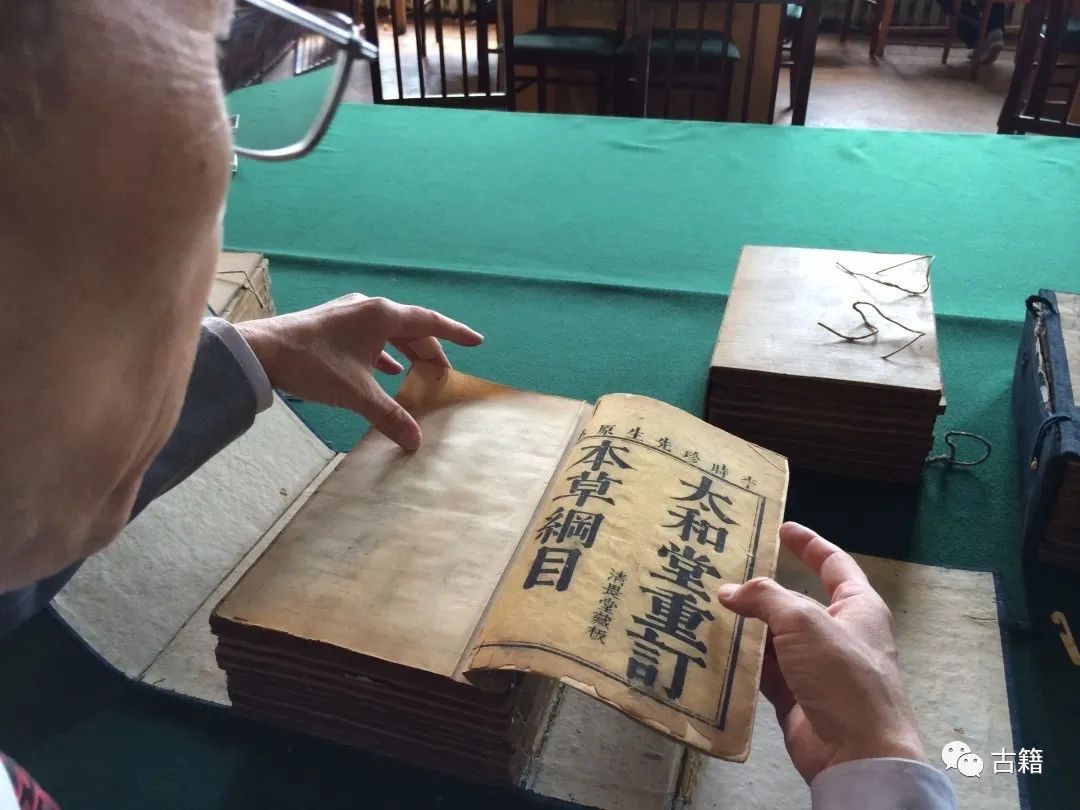
This article examines and organizes the transmission and origins of the Compendium of Materia Medica (Bencao Gangmu) during the Ming and Qing dynasties. Starting from the original text of the Compendium, it employs bibliographic research methods to analyze the major editions throughout history, systematically discussing the versions of the Compendium during the Ming and Qing periods and the areas of uncertainty. The original text of the Compendium was published in 1596, with over 60 editions from the Ming and Qing dynasties, showcasing its rich content and extensive academic scope. Discussions on the versions of the Compendium provide a foundational basis for future research and organization of this work, aiding in the preservation of ancient TCM texts and the development of traditional Chinese medicine.
Li Shizhen (Li Shizhen), courtesy name Dongbi, was a native of Qizhou, Hubei. Born in the 13th year of the Zhengde era (1518), Li Shizhen came from a family of physicians. According to the “History of Ming: Biography of Physicians”, “…after thirty years of extensive research and compilation, he reviewed over 800 works, revised the manuscript three times, and completed the book titled Compendium of Materia Medica.” In the 6th year of the Wanli era (1578), after enduring hardships for 27 years, he finally completed the monumental work of 52 volumes on Chinese herbal medicine, the Compendium of Materia Medica. This book includes 1,892 medicinal substances, with 374 new additions, 11,096 prescriptions, and 1,109 illustrations. The book was officially published in Nanjing in the 21st year of the Wanli era (1593), and three years later (1596), it was officially released, known as the original “Jinling edition”.
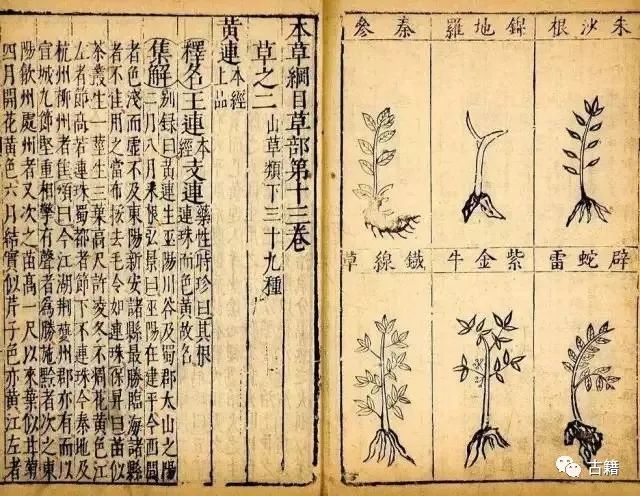
There are numerous versions of the Compendium of Materia Medica. Historically, aside from the recognized original Jinling edition, they are divided into three version systems: the Jiangxi edition, the Hangzhou edition, and the Hefei edition. According to the “Catalog of Existing Materia Medica” compiled by Long Bojian, the “Comprehensive Catalog of Ancient Chinese Medicine” published in 2007, and data retrieved from major libraries, there are over 70 editions of the Compendium from the Ming and Qing dynasties. Excluding unverifiable versions, the Jiangxi edition system has 9 editions from the late Ming to early Qing, the Hangzhou edition system has over 30 editions from the Qing dynasty, and the Hefei edition system has 20 editions from the late Qing and modern times.
Various reprints differ in prefaces, illustrations, accompanying books, content, and formatting. The three major version systems of the Compendium are categorized based on these standards. The most significant differentiation is in the illustration system, which corresponds to the following timeframes: 1) Late Ming to early Qing, where the Jiangxi and Hangzhou editions were primarily reprinted based on the Jinling edition. Other editions from this period mostly followed the Jiangxi edition. 2) Mid-Qing period, where many were reprinted based on the Hangzhou edition by Qian Weiqi. 3) Late Qing period, after the Hefei edition was published in 1885, many reprints were based on it.
Before the first year of the Guangxu era (1875), all versions were woodblock prints. Lithography, a form of flat printing technology, became widespread in Europe in the early 19th century and was introduced in China in the 14th year of the Daoguang era (1834). Therefore, all versions after 1875 are lithographed, while the original editions are woodblock prints, thus having a more profound impact.
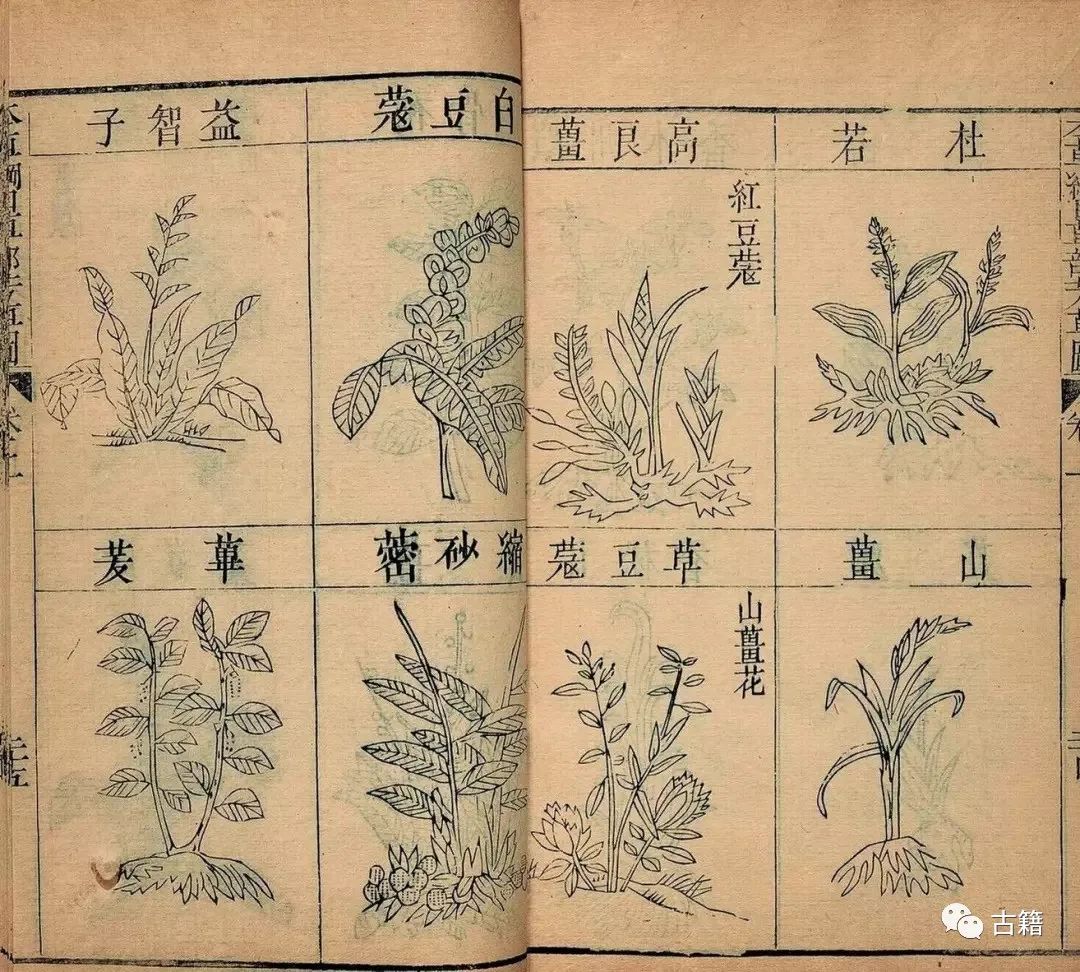
1. The Original System of the Compendium of Materia Medica
1.1 Jinling Edition
The original woodblock edition of the Compendium of Materia Medica was carved by Hu Chenglong in the 18th year of the Wanli era (1590), referred to as the “Jinling edition” or “Hu Chenglong edition”. This version has a frame height of 20 cm and a width of 13.9 cm, with 12 lines per half page and 24 characters per line, totaling 52 volumes, with 2 volumes of illustrations comprising 1,109 images, in 25 books and 4 cases. There are 7 known existing Jinling editions, of which 2 are held by the China Academy of Chinese Medical Sciences and the Shanghai Library, while 3 are stored in Japan’s Kaku Library, Kano Library, and Toyo Library, with one each in the Berlin State Library and the Library of Congress in the United States.
Understanding the Jinling edition through its preface, illustrations, and accompanying books: 1) In terms of prefaces, the Jinling edition has a famous preface written by the renowned literary figure Wang Shizhen, titled “Preface to the Compendium of Materia Medica”, and no other prefaces. Later reprints added the “Introduction to the Compendium of Materia Medica” by Li Shizhen’s son, Li Jianyuan, and other reprinted prefaces. 2) Regarding illustrations, the Jinling edition contains 2 volumes of medicinal illustrations with 1,109 images, with 4-6 images per half page, mostly realistically self-drawn. 3) The Jinling edition does not include any other works by Li Shizhen, which should have originated from the Jiangxi edition. 4) Additionally, the “Compilation of Author Names” is a unique feature of the Jinling edition.
1.2 Zhijin Tang Edition
The Zhijin Tang edition was fortuitously acquired by collector Chao Huiyuan in 2008, originally intended to find the Ming dynasty print of “Li Nv Zhuan” in the Funiu Mountains, but serendipitously obtained the Zhijin Tang version of the Compendium of Materia Medica. The characteristics of this version’s frame height and width, as well as the number of lines and characters per half page, are identical to those of the white paper edition stored in the Tokyo Library and the facsimile of the Jinling edition held by the Shanghai Library.
There is still controversy regarding the exact date of this edition’s printing. One theory suggests that based on the Ming dynasty print catalog, such as the 22-volume “Tang Lu Xuan Gong Ji” and the 22-volume “Xing Li Ti Yao”, it indicates that the owner of Zhijin Tang, Wu Jizheng, was active during the Wanli to Tianqi eras, thus the Zhijin Tang edition should be a publication from this period. Another theory posits that the Zhijin Tang edition may be later than the Sheyuan Tang edition, possibly even from the early Qing dynasty, which requires further verification.
1.3 Sheyuan Tang Edition
The Sheyuan Tang edition is a reprint of the original Jinling edition, printed by Cheng Jiaxiang in the 13th year of the Chongzhen era (1640). The title has been altered, and the illustrations are retitled as “Collected by Cheng Jiaxiang, a student of the Confucian Academy in Wuyuan County, and corrected by Song Zongyin, a student from Huizhou”; the rest remains the same as the Jinling edition.
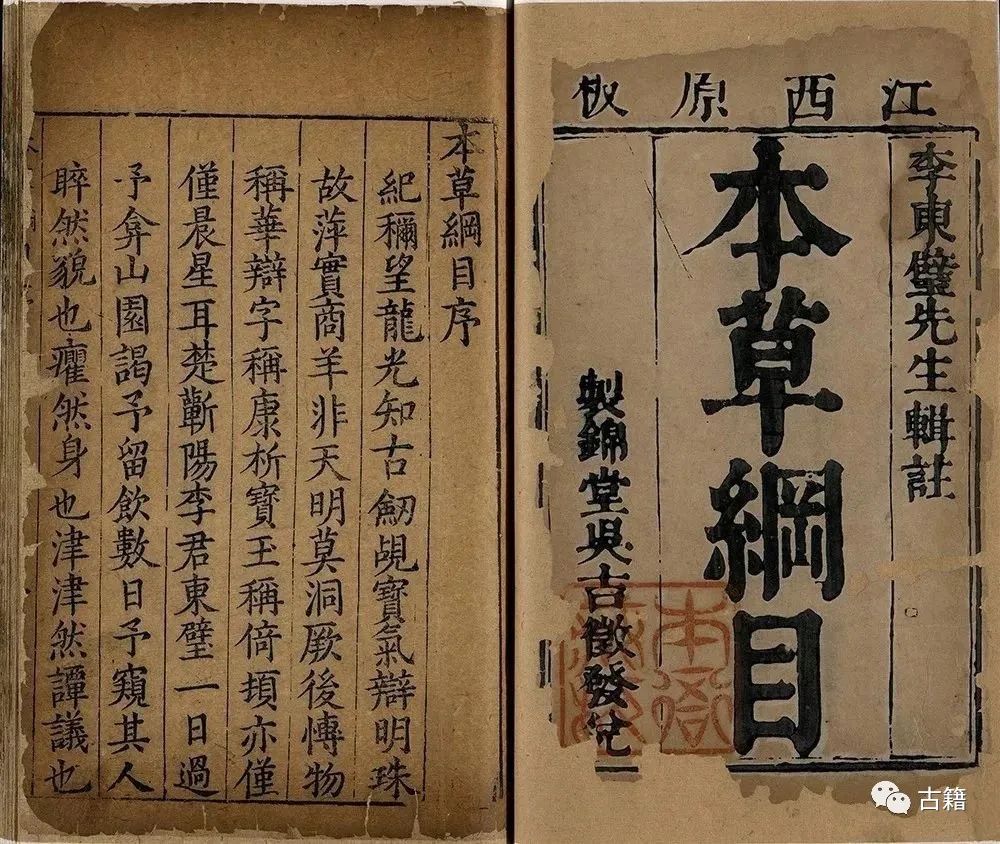
2. Jiangxi Edition System of the Compendium of Materia Medica
2.1 Jiangxi Edition
The Jiangxi edition refers to the woodblock edition printed in the 31st year of the Wanli era (1603) by Xia Liangxin, Zhang Dingsi, and others. This version has a frame height of 22 cm and a width of 15 cm, with 9 lines per half page and 20 characters per line, totaling 52 volumes, with 2 volumes of illustrations in 29 books and 4 cases. Understanding the Jiangxi edition through its preface, illustrations, and accompanying books: 1) In terms of prefaces, in addition to Wang Shizhen’s preface, there are new prefaces by Xia Liangxin, Zhang Dingsi, and Li Jianyuan. 2) Regarding illustrations, the number and arrangement of medicinal illustrations are basically consistent with the Jinling edition. 3) In terms of accompanying books, Zhang Dingsi, at the request of Li Shizhen’s fellow townsman Yuan Shizhen, included Li Shizhen’s “Binh Lake Pulse Studies” and “Examination of the Eight Extraordinary Meridians”. 4) In terms of content, there are errors, omissions, and additions compared to the Jinling edition, such as missing entries for “Bai Ying” and “Wei Ling Xian”, with some annotations mixed with Zhang Shi’s comments. 5) The Jiangxi edition is an official edition, known for its excellent paper and ink quality, and has had a profound influence, serving as the foundation for many late Ming and early Qing editions.
2.2 Hubei Edition
The Hubei edition refers to the woodblock edition printed in the 34th year of the Wanli era (1606) by Yang Daoquan in Jinjiang, Hubei. This version includes the original preface from the Jiangxi edition, along with new prefaces by Yang Daoquan and Dong Qichang.
2.3 Zhang Chaolin Edition
The Zhang Chaolin edition was printed between the 14th year of the Shunzhi era (1657) and the 15th year of the Shunzhi era (1658). This edition includes five new prefaces, namely by Zhang Chaolin, Li Yuan, Li Mingrui, Xiong Wenju, and Li Yuanding, and notes that “the ancient Yue general Han Hongchun reviewed and corrected it”.
2.4 Other Versions
The remaining versions of the Jiangxi edition system are all reprints based on the Xia Liangxin edition, with similar content, and will not be detailed further. Other versions in the Jiangxi edition system include the woodblock edition printed in the 31st year of the Wanli era (1603) by Meishu Yanluoge (Shiqi Ge edition), and the editions from the Chongzhen era (1628-1644) by Hu Zhengyan, Hu Zhengxin, and others.

3. Hangzhou Edition System of the Compendium of Materia Medica
3.1 Hangzhou Edition
The Hangzhou edition is the woodblock edition printed by Qian Weiqi in the 13th year of the Chongzhen era (1640), also known as the Liu You Tang edition. The title page states, “Revised Compendium of Materia Medica, reprinted with thorough investigation, preserved in Wulin Qian’s collection.” This version has a frame height of 21.5 cm and a width of 14 cm, with 9 lines per half page and 20 characters per line, totaling 52 volumes, with illustrations divided into three volumes, comprising 1,110 images, redrawn by artist Lu Zhe. Understanding the Hangzhou edition through its preface, illustrations, and accompanying books: 1) In terms of prefaces, in addition to the original preface from the Jiangxi edition, there is a new preface by Qian Weiqi. 2) Regarding illustrations, the Hangzhou edition underwent the first large-scale redrawing of the illustrations in the Compendium, with 259 images slightly altered, 766 images distorted, and 84 images severely distorted. 3) In terms of content, since the Hangzhou edition was reprinted from the Jiangxi edition, it retains its errors and omissions, along with new mistakes, and in terms of structure, some entries’ “appendices” were moved to follow the “explanations” of each entry. 4) The quality of the woodblock printing in the Hangzhou edition is superior to that of the Jiangxi edition, making it a foundational text for many reprints in the mid-Qing period.
3.2 Taihe Tang Edition
The Wu’s Taihe Tang edition was published in the 12th year of the Shunzhi era (1655) and is a reprint of the Wulin Qian edition, published by Wu Yuchang in Hangzhou Taihe Tang, hence also known as the Wu Yuchang edition. This version includes new prefaces by Wu Yuchang, Wu Taichong, Wu Ben Tai, and Cai Liexian, along with accompanying books such as “Pulse Theory Examination” and “Compendium of Materia Medica” recorded by Cai Liexian in the early Qing dynasty.
In fact, there are still questions regarding the publication date of this version. In Cai Liexian’s preface, it states: “From the third month of the year of the ugly pig (1649) to the second month of the year of the renchen (1652), it took over three years, and I began to announce its success. However, the recorded volumes are close to the time of Li Shizhen’s Compendium, as the Taihe Tang and Benlitang volumes are consistent.” This indicates that Cai Liexian mentioned the Taihe Tang edition as early as the 9th year of the Shunzhi era. According to the “Proceedings of the National Conference on the Academic Thoughts of Li Shizhen and Wang Qingren” published in 2002, the Wu’s Taihe Tang edition should have started printing in the 9th year of the Shunzhi era and continued until the mid-Qing period.
3.3 Jieziyuan Edition
The “Jieziyuan” is the name of the residence of the late Ming and early Qing literary figure and playwright Li Yu (1611-1680). The Jieziyuan edition is a reprint based on the Qian Weiqi edition, published during the Kangxi era, with the exact date unknown. The revised Jieziyuan edition was published in the 11th year of the Tongzhi era (1872). Due to Jieziyuan’s reputation for painting, it invited the most renowned painters and engravers of the time, who meticulously carved the previously distorted and erroneous medicinal illustrations, leading to its rapid sell-out and playing a significant role in the dissemination of the Compendium of Materia Medica.
3.4 Other Versions
The remaining versions of the Hangzhou edition system are all reprints based on the Qian Weiqi and Wu’s Taihe Tang editions. Other versions in this system include the Benlitang edition published in the 52nd year of the Kangxi era (1713) and the Hanying Yuzhang Tang edition published in the 53rd year of the Kangxi era (1714).
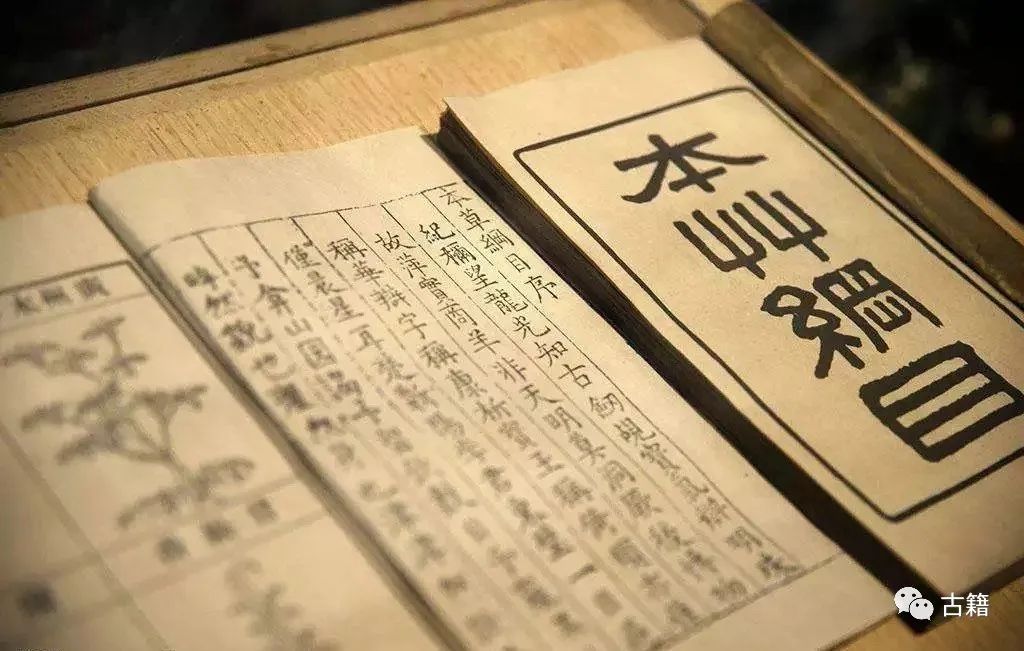
4. Hefei Edition System of the Compendium of Materia Medica
4.1 Hefei Edition
The Hefei edition is the reprinted version edited by Zhang Shaotang in the 11th year of the Guangxu era (1885), also known as the Weigu Zhai edition, which is a revised edition based on the Zhang Chaolin edition. The title page states: “Compendium of Materia Medica”, with the reverse stating: “Revised and published in Hefei by Zhang in the summer of the year of the yiyou (1885)”. This version contains 3 volumes of medicinal illustrations, with 4 images per half page, totaling 1,122 images.
4.2 Other Versions
In the late Qing dynasty, versions reprinted based on the Hefei edition include the lithographed version published by Hongbaozhai in the 14th year of the Guangxu era (1888), which includes a preface by Shen Zuyuan; as well as the lead-printed version published by the Shanghai Book Collection Press in the 20th year of the Guangxu era (1894) and the lithographed version published by the Shanghai Commercial Press in the 34th year of the Guangxu era (1908).
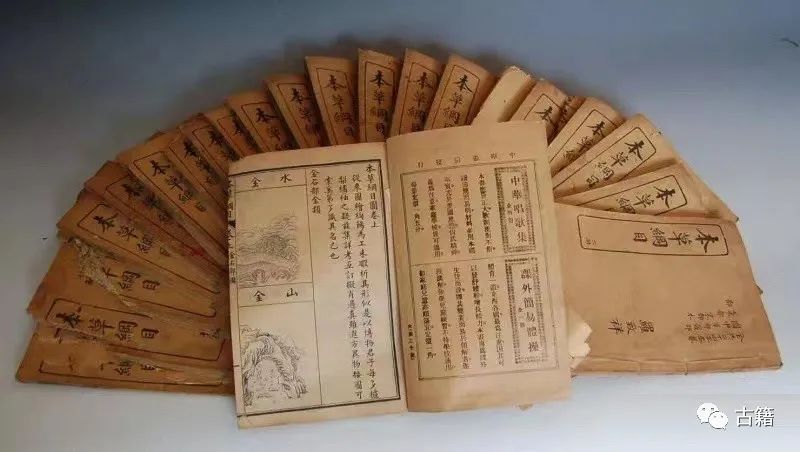
Conclusion
The Compendium of Materia Medica is a monumental work that encapsulates the achievements of Chinese herbal medicine before the 16th century, and it can be described as an encyclopedia of pharmacology with global influence. Its content not only covers Chinese herbal medicine but also contributes to various fields such as biology, chemistry, astronomy, geography, geology, mining, and even history. Historically, research on the versions of the Compendium has been relatively uniform; however, with societal development, many previously hidden versions, such as the Zhijin Tang and Wu’s Taihe Tang editions, have gradually surfaced, aiding in the study of the timeline of the Compendium’s various editions. For a work like the Compendium of Materia Medica, the pursuit of its origins should never cease, and through the explorations of future generations, the answers to the questions surrounding its versions will eventually come to light.
References
[1] Zhang Tingyu. History of Ming: Biography of Physicians [M]. Beijing: Zhonghua Book Company, 1957: 7653.
[2] Xue Qinglu. Comprehensive Catalog of Ancient Chinese Medicine [M]. Beijing: Ancient Chinese Medicine Publishing House, 1991: 201-204.
[3] Li Zairong. Research on the Transmission of the Compendium of Materia Medica [D]. Beijing: Beijing University of Chinese Medicine, 2004: 5. http://cdmd.cnki.com.cn/Article/CDMD-10026-2004118919.htm
[4] Chao Huiyuan. Discovery and Research of the Precious Original Edition of the Compendium of Materia Medica [N]. Guangming Daily, 2013-04-25.
[5] Xing Zetian. The Publication Date of the Reprint of the Jinling Edition of the Compendium of Materia Medica [J]. Journal of Traditional Chinese Medicine Research, 2015, 28 (12): 73–73. DOI:10.3969/j.issn.1001-6910.2015.1034
[6] Zheng Jinsheng. Initial Study of the Jinling Edition of the Compendium of Materia Medica [J]. Journal of Chinese Medical History, 2014, 44 (2): 106–110.
[7] Shang Zhijun. Research on the Versions of the Compendium of Materia Medica [J]. Journal of Anhui University of Traditional Chinese Medicine, 1988, 7 (4): 45–49.
[8] Xing Zetian, Xing Wenqing. Printing Situation of Wu’s Taihe Tang Edition of the Compendium of Materia Medica [A]. Proceedings of the National Conference on the Academic Thoughts of Li Shizhen and Wang Qingren [C], 2002: 113-115.
[9] Ma Jixing. Brief Record of the Editions of the Compendium of Materia Medica [J]. Journal of Traditional Chinese Medicine, 1984, 8 (36): 57–60.
[10] Hao Changyi. The Ever-Memorable Li Shizhen: The Evolution of Li Shizhen’s Image in Social and Cultural Changes [D]. Tianjin: Nankai University, 2011: 5.

